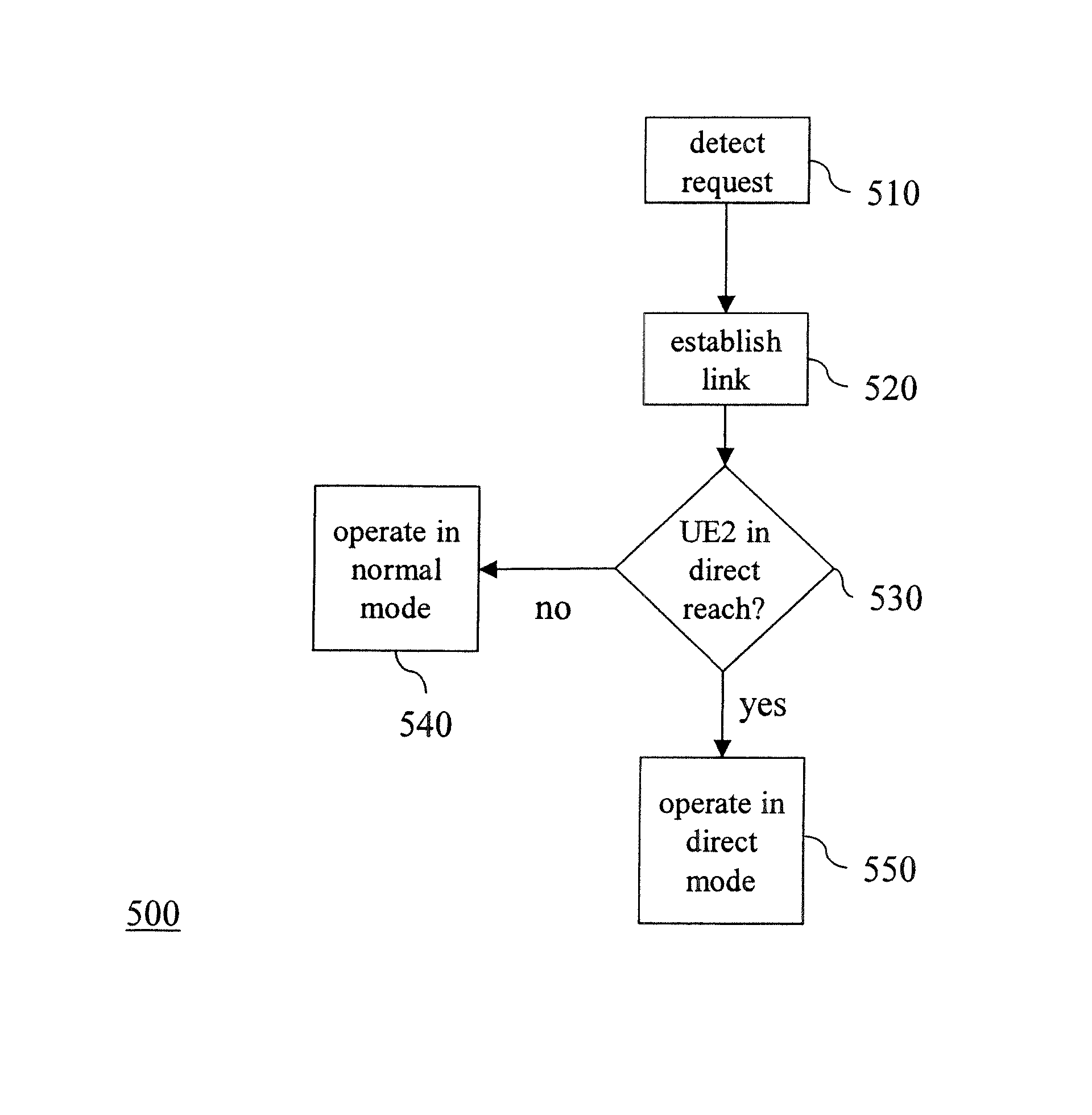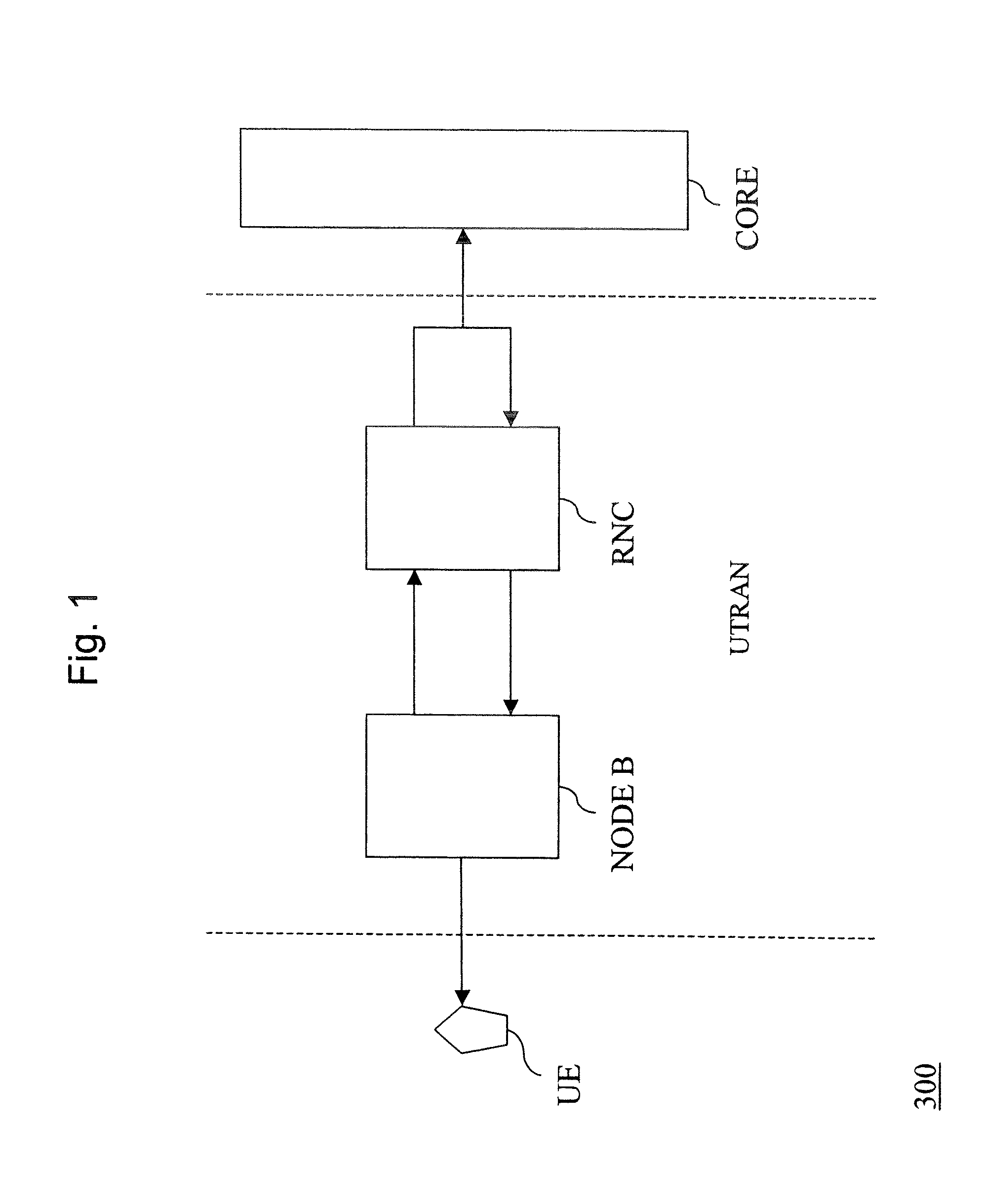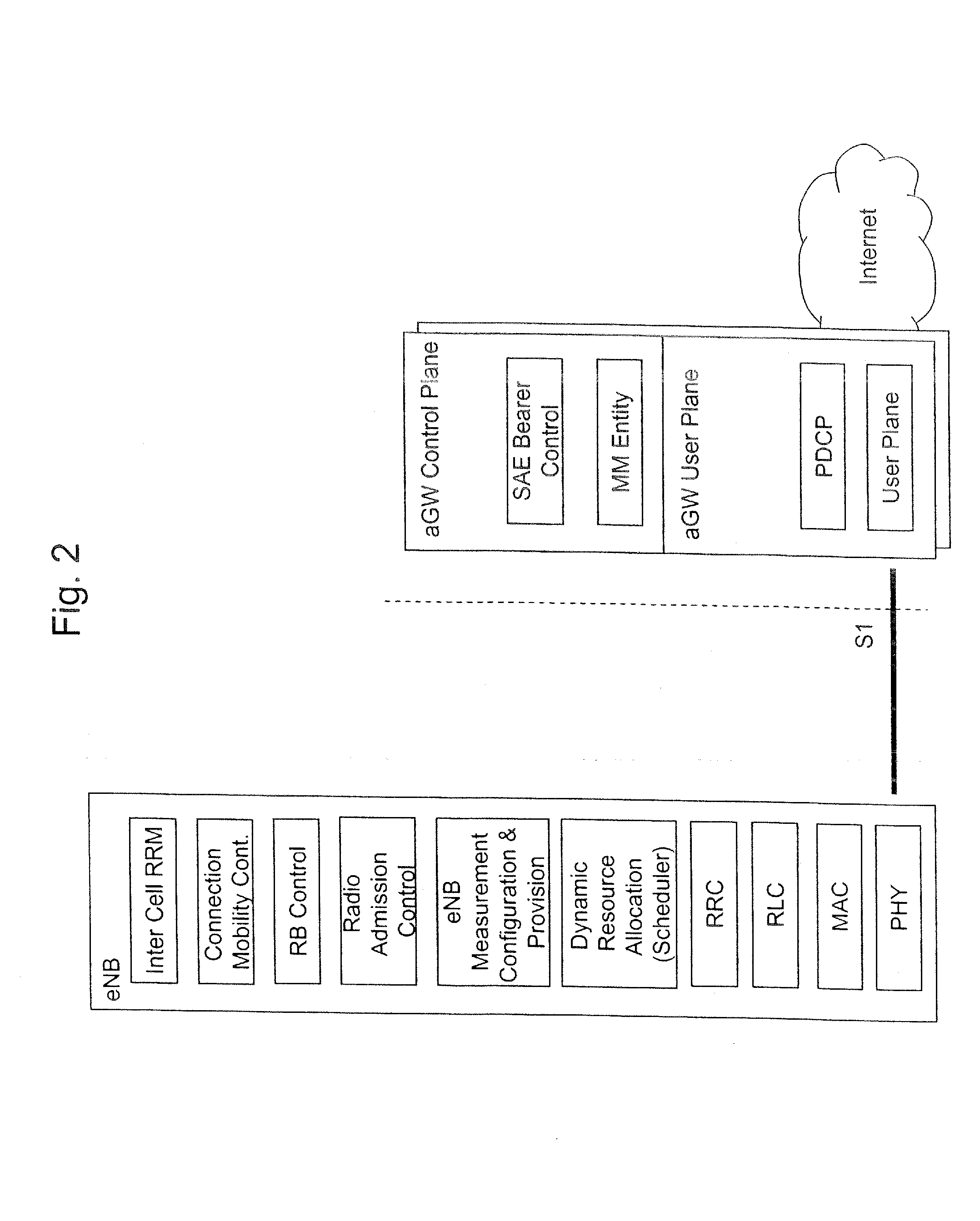Flexible network architecture with user group support
a flexible network and user group technology, applied in the field of mobile communication networks, can solve the problems of high network load, inability to achieve data rates that could be possible with a given air interface design, and inability to transfer high data rates in current mobile networks, etc., to achieve the effect of reducing latency and high network load
- Summary
- Abstract
- Description
- Claims
- Application Information
AI Technical Summary
Benefits of technology
Problems solved by technology
Method used
Image
Examples
Embodiment Construction
[0029] The method and the network element operate in two different modes: normal mode and direct mode.
[0030]FIG. 3 is a schematic diagram showing call / connection handling in normal mode according to the state of the art. A call originating from a first User Equipment (UE1) is routed over the base station (NODE B) and the Radio Network Control (RNC) to the core network (CORE) and from there back over the same Radio Network Control (RNC) and base station (NODE B) to the second user equipment (UE2).
[0031] The base station (NODE B) is aware or may automatically find out that the second user equipment (UE2) to which the call is to be routed, is within the reach of the base station, be it in the same cell or in two logically separate cells. However, regardless of this fact, in normal mode the base station routes the call to the core network.
[0032]FIG. 4 is a schematic diagram showing in principle the operation of the network according to an embodiment of the invention, now in direct mo...
PUM
 Login to View More
Login to View More Abstract
Description
Claims
Application Information
 Login to View More
Login to View More - R&D
- Intellectual Property
- Life Sciences
- Materials
- Tech Scout
- Unparalleled Data Quality
- Higher Quality Content
- 60% Fewer Hallucinations
Browse by: Latest US Patents, China's latest patents, Technical Efficacy Thesaurus, Application Domain, Technology Topic, Popular Technical Reports.
© 2025 PatSnap. All rights reserved.Legal|Privacy policy|Modern Slavery Act Transparency Statement|Sitemap|About US| Contact US: help@patsnap.com



